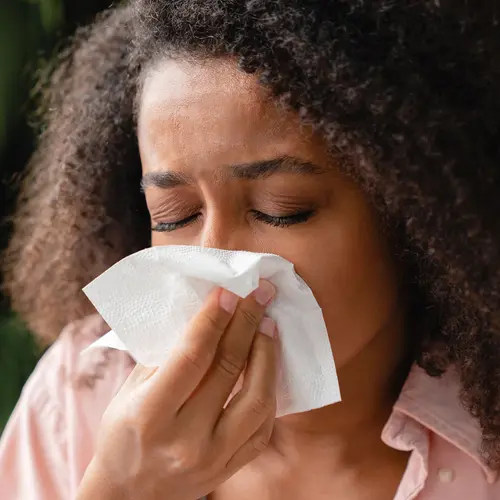What Is a Penicillin Allergy?
A penicillin allergy is a reaction by your immune system to the antibiotic drug penicillin. Since the 1940s, penicillin has been a go-to drug to clear up infections caused by bacteria. But some people get a bad reaction from taking it.
Your immune system is supposed to fight off the bacteria that make you sick. But sometimes your body fights the medicine itself. That’s what happens if you are allergic to penicillin. Your immune system thinks it’s an invader and wants to get rid of it.
Doctors try to match the right antibiotic to the right sickness. That job is tougher if you have a penicillin allergy. You may want to get tested if you notice problems.
Penicillin Allergy Symptoms
You could notice some of these signs of an allergic reaction within an hour of taking penicillin:
Anaphylaxis
In rare cases, you might have a severe reaction called anaphylaxis. Call 911 if you or someone you are with has these symptoms after taking penicillin:
Belly pain
Trouble Breathing
Feeling dizzy or light-headed, or passing out
Throat or tongue swells up
Tightness in the chest
Throwing up, or feeling like you might
Delayed reaction
Though it’s not common, some allergic reactions can happen days or weeks later. These include:
Joint pain
Swelling
A rash
Feeling like you’re about to throw up
Unexplained exhaustion
Fever
Confusion.
Heartbeat seems “off.”
Blood in your pee
A penicillin allergy can bring on these illnesses:
Serum sickness. You have fever, rash, joint pain, swelling and nausea.
Drug-induced anemia. You have fewer red blood cells than normal. This causes a feeling of tiredness, heartbeats that are too fast or too slow, shortness of breath, and other symptoms.
DRESS (drug reaction with eosinophilia and systemic symptoms). With DRESS, your whole body is affected and you get high white blood cell counts, along with general swelling and swollen lymph nodes. An old hepatitis infection may come back.
Stevens-Johnson syndrome (or toxic epidermal necrolysis).This is a serious skin reaction which causes a painful rash, blistering and shedding. It usually starts with flu-like symptoms and skin healing starts after several days.
Nephritis (inflamed kidneys). You may have fever, blood in your urine, swelling all over your body, confusion, and other symptoms.
Penicillin Allergy Causes and Risk Factors
Anyone could be allergic to this type of antibiotic, but you might be more likely to if you have:
If you’ve had to take penicillin often, for a long time or in high doses, you may also be more likely to have a bad reaction.
Penicillin Allergy Test
Make an appointment to see your doctor, who will examine you and answer questions about what symptoms you’ve had and how long they lasted.
You may also get a skin test or a challenge test.
First, your doctor will use a tiny needle to prick your forearm and give you a weak dose of penicillin. The needle will barely break your skin. If you have an allergy, you’ll get an itchy red bump, which looks like a mosquito bite, in about 15 minutes.
If you don’t get a bump, they will give you a dose of penicillin under the skin of your forearm. Again, if you get a bump within 15 minutes, you are allergic to penicillin.
If you still don’t get a bump, it’s likely you’re not allergic.
Just to be sure, your doctor might give you a regular dose of penicillin by mouth. You’ll stay in the office for about an hour. If you don’t have any symptoms with this dose, your doctor will let you know if you are in the clear.
Most of the time, you get a challenge test when you really need penicillin and your doctor doesn’t have a skin test.
For the challenge test, they will start you with a small dose. If you don’t have a reaction after 30-60 minutes, you’ll take a higher dose. You will work your way higher every 30-60 minutes until you take a full dose. It usually takes 4-5 doses.
If you don’t have symptoms after the full dose, you don’t have the allergy.
Penicillin Allergy Treatment
If you have taken penicillin without realizing you have an allergy, stop taking it and call your doctor.
They may prescribe a medicine called an antihistamine, such as diphenhydramine, to help with your symptoms. For more serious problems such as swelling, they might give you a medicine called a corticosteroid.
If you have anaphylaxis, they’ll give you a drug called epinephrine right away. You’ll spend some time in the hospital until your blood pressure and breathing are better.
Penicillin Alternatives
When you can’t take penicillin, you normally avoid it. Your doctor will try to find another kind of antibiotic.
If you really need penicillin, you may get a treatment called desensitization. You usually would get this only if you didn’t react with anaphylaxis previously.
In desensitization, your doctor will start you with a small dose of penicillin. If you don’t show allergy symptoms in 15-30 minutes, then you get a higher dose.
You get higher doses over a few hours or days. If you don’t have symptoms, then you can keep taking penicillin.
Penicillin Allergy Complications
As with other medications you may have side effects that aren’t a sign of a penicillin allergy, like nausea, diarrhea, headache, or vaginal itching.
The most serious complication to look out for is anaphylaxis. This rare, life-threatening reaction causes your body systems to shut down. Anaphylaxis is a medical emergency that needs immediate care. Call 911 if you or anyone you know has symptoms of anaphylaxis.

